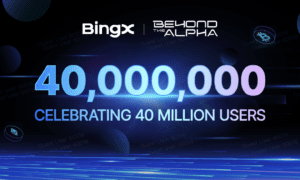Welcome to the future of the internet, where groundbreaking technologies collide to create a truly transformative digital landscape. In this blog post, we are diving headfirst into the exciting world of Web3 technologies and blockchain – a match made in cyberspace heaven. Gone are the days of centralized control and limitations; it’s time to embrace decentralization and unlock limitless possibilities. Get ready to strap on your virtual reality goggles and join us on this thrilling journey towards a smarter, more secure, and empowering internet experience like never before.
Introduction to Web3 Technologies
Web3 technologies are the future of the internet. They provide a platform for decentralized applications that run on a blockchain. This makes them more secure and efficient than traditional centralized applications.
Web3 technologies can be used to build a wide range of applications, from social media platforms to financial services. They also have the potential to disrupt many industries, including banking, healthcare, and energy.
There are many different web3 technologies available, each with its own strengths and weaknesses. In order to choose the right technology for your application, it is important to understand the difference between them.
The most popular web3 technology is Ethereum. Ethereum is a decentralized platform that runs smart contracts: applications that run exactly as programmed without any possibility of fraud or third party interference.
Ethereum is used by a number of high-profile companies, including Microsoft, Samsung, and JPMorgan Chase. It is also used by a number of startups and small businesses. Other popular web3 technologies include EOSIO, Hyperledger Fabric, and Corda.
What is Blockchain?
1. What Is Blockchain?
A blockchain is a digital ledger of all cryptocurrency transactions. It is constantly growing as “completed” blocks are added to it with a new set of recordings. Each block contains a cryptographic hash of the previous block, a timestamp, and transaction data. Bitcoin nodes use the block chain to differentiate legitimate Bitcoin transactions from attempts to re-spend coins that have already been spent elsewhere.
2. How Does Blockchain Work?
The most important thing to understand about how a blockchain works is that it isn’t maintained by any centralized authority. Instead, it’s stored and verified by everyone in the network who wants to use it – this makes it practically tamper-proof. Whenever a transaction is made, all the nodes in the network verify and update the ledger simultaneously. This means that if someone tries to change even just one record, they’d need to do so on every single node in the network – an impossible feat.
3. What Are The Benefits Of Blockchain?
By its very nature, a blockchain is incredibly secure – this makes it ideal for financial transactions or anything else that requires a high degree of security. Beyond that, however, there are many other potential uses for blockchain technology:
• Increasing transparency – By providing a tamper-proof means for verifying records, blockchain can be used to increase the transparency of various processes.
• Reducing costs – The decentralized nature of a blockchain means that middlemen and associated fees can be eliminated. This could ultimately result in lower operational costs.
• Enhancing accuracy – As records are stored and verified publicly on a blockchain, errors can easily be identified and corrected. This makes it difficult for someone to falsely represent themselves or their activities.
Security Benefits of Web3 and Blockchain
The internet has come a long way since its humble beginnings as a tool for academics and the military. Today, it’s an integral part of our lives, used for everything from entertainment and communication to work and commerce. But as the internet has become more central to our lives, so too have the risks associated with it. Data breaches are becoming more common, and malicious actors are finding new ways to exploit weaknesses in our online infrastructure.
Enter blockchain. By its very nature, blockchain is secure and resistant to tampering. That’s because each transaction is verified by a network of computers, rather than being stored centrally on a server where it could be more easily hacked. This decentralized approach makes it much harder for attackers to gain access to sensitive data or disrupt service.
In addition, blockchain can be used to create tamper-proof digital records of important information. That means that things like medical records, financial transactions, and voting results can be securely stored on the blockchain, ensuring that they can’t be altered after the fact.
So what does all this mean for the average internet user? Well, increased security and stability are just two of the benefits that blockchain brings to the table. As these technologies continue to develop, we can expect even more transformative applications that will make the internet a safer and more reliable place for everyone.
Web3 versus Traditional Networked Systems
Web3 is the future of the internet, and it offers a number of advantages over traditional networked systems. Perhaps most notably, Web3 is designed to be much more secure than its predecessors. Traditional networked systems are often vulnerable to attack, but Web3 uses a variety of security features to make it much more difficult for attackers to succeed. In addition, Web3 is also designed to be more scalable than traditional systems, meaning that it can handle more traffic and data without running into problems. Web3 is also designed to be more efficient than traditional systems, using less energy and resources to achieve the same results.
Challenges Faced by Web3 and Blockchain in Data Protection
The race to adopt web3 and blockchain technologies is on, but there are still many challenges that need to be overcome before these technologies can go mainstream. One of the biggest challenges is data protection.
Blockchain technology is still in its infancy and lacks the robustness needed to protect sensitive data. The current crop of blockchain platforms are simply not up to the task of securely storing and managing large amounts of data. This is a huge challenge that needs to be addressed before web3 and blockchain can truly take off.
Another challenge facing web3 and blockchain is scalability. The current batch of blockchain platforms can only handle a limited amount of transactions per second. This needs to improve if blockchain is going to be used for large-scale applications such as payments or supply chain management.
Web3 and blockchain need to become more user-friendly if they are going to be adopted by the masses. The current crop of wallets and dapps are often difficult to use and understand. This needs to change if these technologies are going to reach their full potential.
Potential Use Cases for the Future Advertising Industry
As we look to the future of advertising, there are a number of potential use cases for blockchain technology that could revolutionize the industry. Here are just a few of the ways that blockchain could be used in advertising:
• Fraud detection and prevention: Blockchain’s decentralized nature could help to identify and prevent fraud in the ad industry. For example, if an advertiser tried to create multiple accounts to inflate their reach or click-through rates, other market participants would be able to quickly flag this activity.
• Improved audience targeting: By securely storing data about user interests and behavior on a blockchain, advertisers would be able to more accurately target their ads to specific audiences. This would result in improved ad relevancy and engagement, and reduced waste.
• Greater transparency and accountability: Blockchain could also help to increase transparency and accountability in the ad industry, by providing a public record of all ad spend and activity. This would make it easier to track where money is going, identify any potential malpractice, and ensure that ads are being seen by the people they are meant to reach.
• New opportunities for marketing collaborations: In a world where data is stored on a blockchain, marketers would be able to more easily share information with each other and form strategic partnerships. This could lead to more effective campaigns and better results for brands.
Conclusion
Web3 technologies and blockchain have the potential to revolutionize our current internet. We can look forward to shorter loading times, better cyber security, more intelligent search features and a greater level of trust amongst users. This perfect match has already started to improve the way we experience digital spaces with its decentralized approach allowing for increased opportunities for data ownership, privacy protection and improved services such as healthcare solutions. As these technologies evolve over time, they will continue to offer us smarter online experiences that unify the best of both worlds: secure technology and enhanced convenience.


































